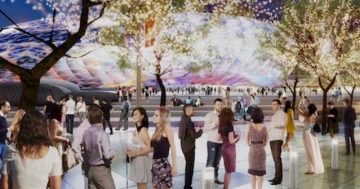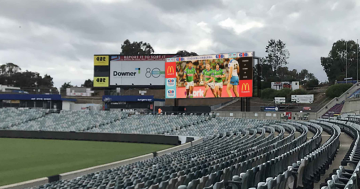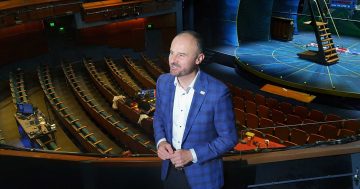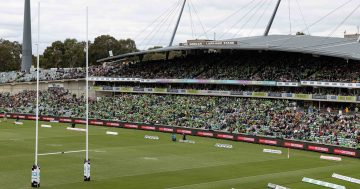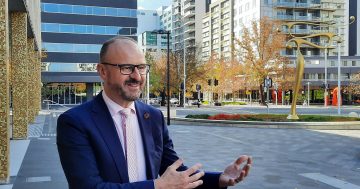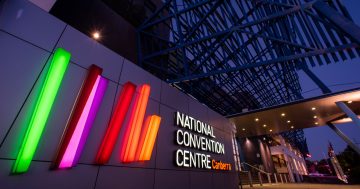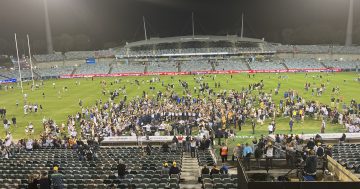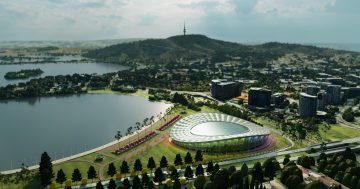
An artist’s impression of the city stadium precinct from a previous study. Photo: GHDWoodhead.
If asked, most people would say yes to a new stadium in the city to watch top-level football and attend concerts for the big stars that currently bypass the national capital.
Bruce is out of the way, the current stadium is ageing, and in the middle of a Canberra winter, it is hard to compete with the comfort and warmth of home or a club or pub.
A state-of-the-art enclosed facility would be fantastic.
If the idea is so popular, why not just build it?
If it were that easy, Andrew Barr, who floated the possibility in another life as Sports Minister, would have done it by now.
He finally attempted to kill the idea last month, citing the cost – for him, it’s a cool billion, although the proponents say $495 million to $736 million – and the difficulty of fitting a facility on the proposed site, the Civic pool.
But the campaign goes on, and a new proposal from the city’s sporting, business and entertainment interests for a 30,000-seat stadium aims to overcome those barriers.
The gist of it is if the Commonwealth can give back to the territory a stack of AIS land, that can be used to pay for not just a stadium but a new uncosted convention centre as well.
The proposal’s stadium consultants have come up with an interesting inverted-bowl design that will fit on the pool site without affecting Parkes Way and are confident there are engineering solutions to any other problems.
The proposal – or Blueprint for Action, as the backers say – is supposed to be an elegant solution where governments’ bottom lines aren’t impacted.
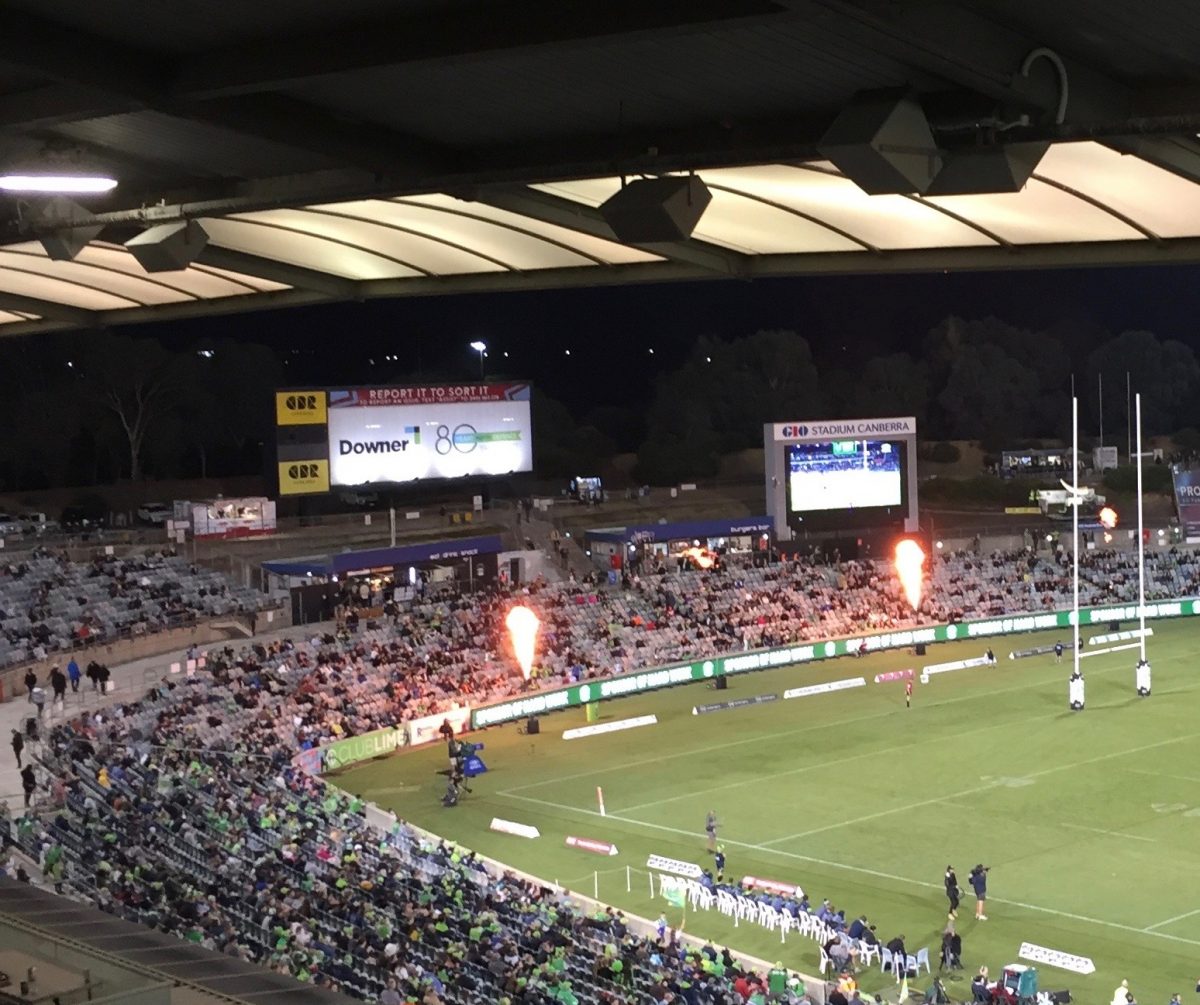
Canberra Stadium: out of the way, chilly and ageing. Photo: Jennifer Andrew.
It has strong backing from big sport, including the national bodies, business, tourism and event sectors, and the convention industry.
Two former MPs – Mike Kelly and Warren Snowden – have been recruited to spruik it, issuing a formal statement last week.
A website and a petition has also been launched.
Part of the sell is that such a precinct would have a big economic payoff for the city and support the role of the National Capital.
All true, if one could ensure both the convention centre and, more importantly, the stadium was in regular use.
But then the big if is whether the Commonwealth will cede the AIS land at all when the Australian Sports Commission led by Olympian Kieren Perkins wants to revitalise the Bruce precinct, obviously with an eye to the 2032 Brisbane Olympics.
Will Anthony Albanese reverse the decision to fix the AIS Arena, sacrifice Perkins’ aspirations and risk Olympic failure by providing the windfall to the ACT necessary to make this proposal happen?
Perhaps, if Senator David Pocock, who went to the election calling for a joint convention centre and the stadium project, has the Federal Government over a barrel and is willing to horsetrade, something he has so far been unwilling to do.
At this point, the PM and the Senator play on the higher ground of national interest.
If the land were to become available, a Public Private Partnership is proposed as the development vehicle for it and the stadium and convention centre project it would service.
But there is no detail about how that would work. PPPs look good on the surface but can cost taxpayers dearly.
The government also has set its infrastructure priorities in the city, and the Canberra Theatre Centre redevelopment as part of new cultural precinct is the next cab off the rank, not to mention light rail if it can stay in office.
The argument for the theatre project has always been that it is a facility in constant use instead of the vagaries of sporting and big concert dates.
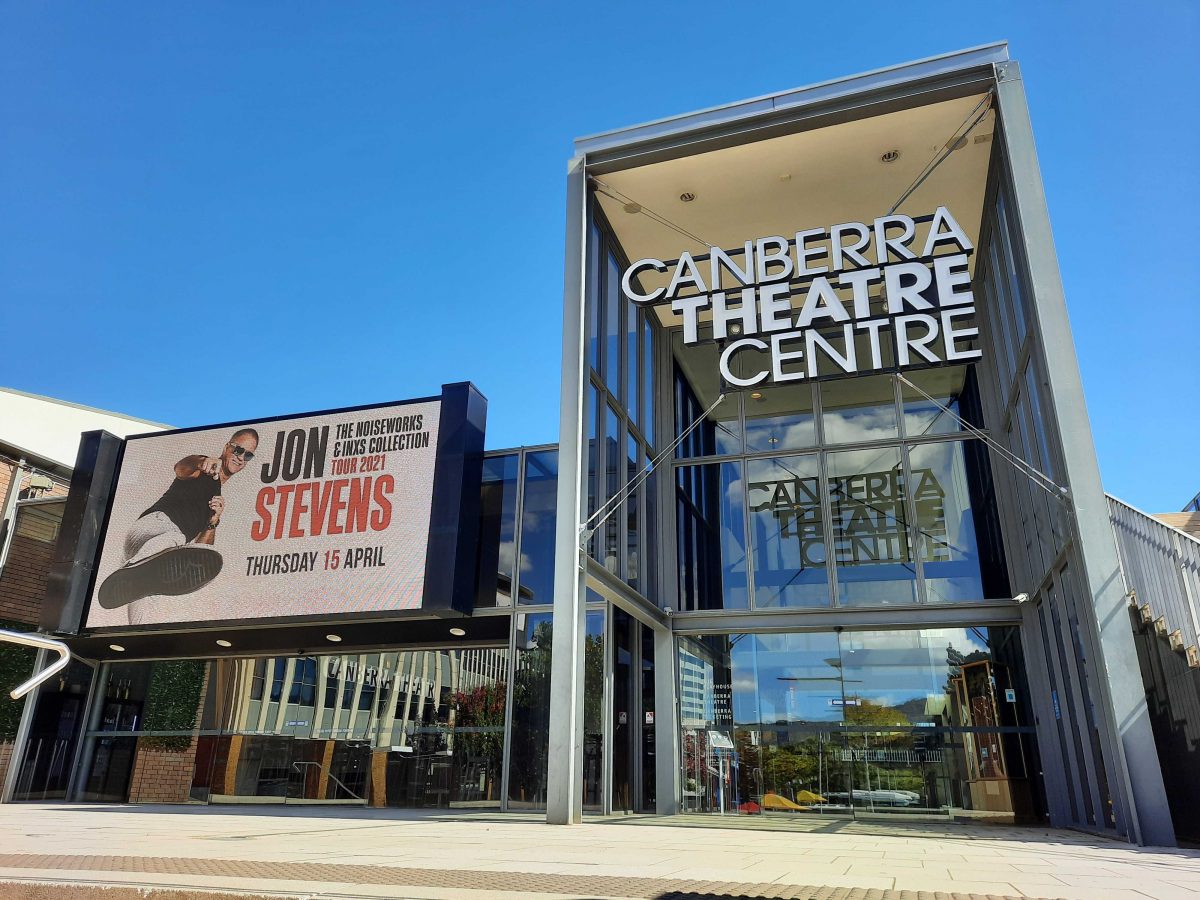
Canberra Theatre Centre: its redevelopmnet is a government priority. Photo: Region.
The theatre project is getting to the serious design stage and construction will hopefully get underway in 2025, after the Canberra Hospital expansion is completed and about the same time as the Woden CIT is due to open.
Does the government have the capacity to run, even as a PPP, another project of the magnitude of the stadium/convention centre at the same time?
Mr Barr has always said in recent times that a stadium would have to wait. Perhaps by then a joint ACT/Commonwealth commitment, which would be preferable, could do the job.
He says the government will look at the latest push but has noted a range of challenges.
The ball, however, is well and truly in the Commonwealth’s court about the funding plan the proposal relies on.
And while the Canberra Liberals are opportunistic enough to back it now, they would not be so gung ho if they made it into government.
So the city stadium, as much as we might like one, is an idea whose time may not yet have come.
Now, private investors might like to throw a billion at it, but stadia are risky propositions. It would still have to make money, and clubs and punters might baulk at the cost of rent and tickets.
A last word. The proposal eyes Glebe Park or part of it for the convention centre development. Hands off! It is a green jewel in the city that should be sacrosanct.












